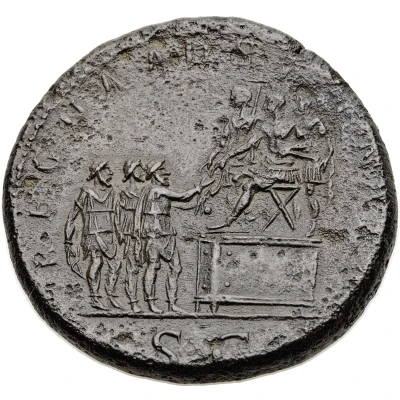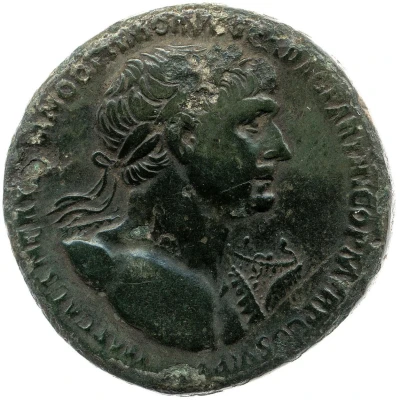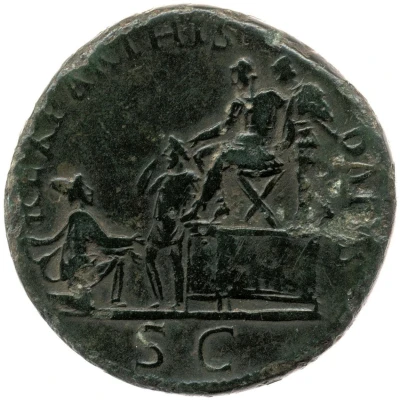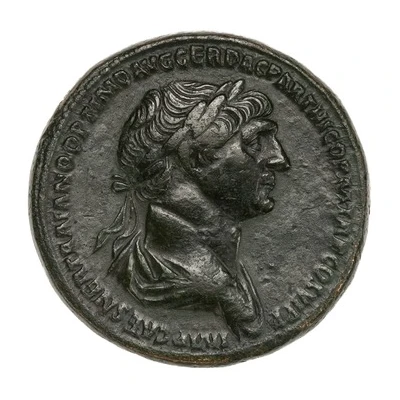
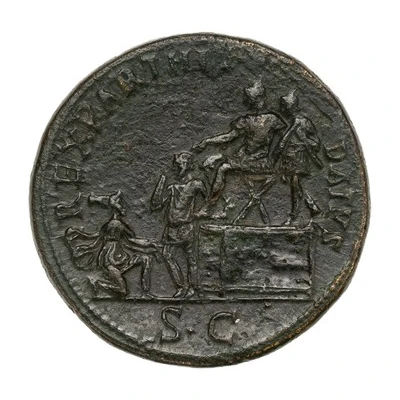

© American Numismatic Society (ANS)
Sestertius - Trajan and Parthamaspates REX PARTHIS DATVS S C; Parthia
| Bronze | 25.5 g | 33.5 mm |
| Issuer | Rome › Roman Empire (27 BC - 395 AD) |
|---|---|
| Emperor | Trajan (Marcus Ulpius Traianus) (98-117) |
| Type | Standard circulation coin |
| Years | 114-117 |
| Value | 1 Sestertius = ¼ Denarius |
| Currency | Denarius, Reform of Augustus (27 BC – AD 215) |
| Composition | Bronze |
| Weight | 25.5 g |
| Diameter | 33.5 mm |
| Shape | Round (irregular) |
| Technique | Hammered |
| Orientation | Coin alignment ↑↓ |
| Demonetized | Yes |
| Updated | 2024-10-06 |
| Numista | N#253641 |
|---|---|
| Rarity index | 95% |
Reverse
Trajan, bare-headed, in military dress, seated left on platform on right with prefect, presenting King Parthamaspates, standing left, to Parthia, kneeling in front of him.
Script: Latin
Lettering: REX PARTHIS DATVS S C
Translation:
Rex Parthis Datus. Senatus Consultum.
A king given to the Parthians. Decree of the Senate.
Comment
Mass varies: 20.535–27.8 g;Diameter varies: 25–35 mm;
Source: Online Coins of the Roman Empire (OCRE)
Interesting fact
One interesting fact about this coin is that it features a rare representation of a Parthian king, Parthamaspates, on a Roman coin. This is significant because it highlights the diplomatic relations between the Roman Empire and the Parthian Empire during the reign of Trajan. The inclusion of Parthamaspates on the coin suggests that he was a vassal or ally of Rome, and this representation serves as a symbol of the political alliances between the two powers. Additionally, the coin's design, which includes the title "REX PARTHIS" (King of the Parthians), further emphasizes the connection between the two empires. This coin is a unique example of cultural exchange and political cooperation between ancient civilizations.

